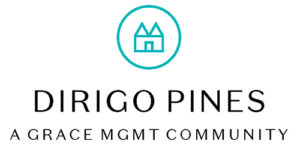Minetti Quartet w/ Andreas Klein
This award-winning string quartet from Austria, renowned for their performances at premier chamber music festivals and the world’s most prestigious concert halls, joins forces with esteemed German pianist Andreas Klein for an extraordinary concert.
PROGRAM:
Quartettsatz in C minor D 703 – Franz Schubert (1797 – 1828)
Piano Concerto K. 415 in C Major (cadenza by Andreas Klein) – W.A. Mozart (1756 – 1791)
String Quartet C minor, Op.51, No. 1 – Johannes Brahms (1833 – 1897)
Tickets $43 | K-12 students free with an accompanying adult | All fees included
PROGRAM NOTES By Dr. Jack Burt:
Schubert: Quartettsatz in C minor (1820)
Unfinished works, especially such works from composers whose lives were cut short, often carry the added weight of mystery. The most famous of these, the Mozart Requiem and the “Unfinished” Symphony of Schubert, have had stories attached to them which deepen the sense of loss. In most cases however, the “truth,” as well as we can know it, is more prosaic. Mozart was overworked and sickly throughout his life. He received the Last Rites of the Catholic Church numerous times in his short life. In late 1791, he became ill and died while composing the Requiem, just at the time in which his fortunes were clearly turning for the better. Schubert’s reason for leaving works unfinished, sometimes for years, can be most probably ascribed to his chaotic bachelor lifestyle, poor health, and the need to chase a commission or two as they came along. He often put works to the side, to start another project, and sometimes never returned to them.
This isn’t the most poetic view, but it is the more probable one. The depth of the music and the sense of mystery and loss that both the Requiem and the “Unfinished” genuinely possess is in no way lessened by accepting that both composers led lives much like ours: busy and cluttered, but much less secure.
Schubert’s Quartettsatz (“Quartet Movement”) was composed in 1820, and was the planned first movement of a 12th String Quartet that was never to be finished. He would go on to complete three more quartets. The last, No. 15 in G, was completed in 1826.
The score to the unfinished Quartettsatz would eventually come into the possession of Johannes Brahms. It was premiered, edited by Brahms, in 1870. When listening to Brahms’ Quartet No. 1, and his 1st Symphony, it is clear that he had studied the Quartettsatz closely. It is in some ways a model for both works.
Mozart: Concerto No. 13 in C Major, K 415 (1782-3)
At the start of Mozart’s decade in Vienna, the last of his short life, his primary source of income was concertizing, usually performing his own works. To that end, between 1782 and 1786, he composed 15 concertos for piano, which he would usually perform in subscription concerts. The Concerto K. 415 was the third of three that Mozart composed rather quickly in 1782-3. These were composed after his work on his first Viennese opera, The Abduction from the Seraglio. He described the concertos to his father as “a happy medium between what is too easy and too difficult… pleasing to the ear, natural, without being vapid.”
The seemingly unusual arrangement of today’s performance of the concerto – only String quartet and piano – was foreseen by Mozart as a possible performance combination, explicitly stating that the wind and brass parts could be done without, making it a perfect combination for smaller forces.
Brahms: Quartet in C minor, Op. 51, No. 1 (1870)
Like the symphony, Brahms found string quartet composition hard going. His famous quote about the difficulty of composing “with the footsteps of a giant in my head,” referring to Beethoven, is as valid for the quartet genre as it is for the symphony. Beethoven’s 16 string quartets were as much a problem for Brahm as were his nine symphonies.. Hugely self-critical, he reportedly destroyed over a dozen quartet drafts before finishing the Quartet No. 1 in C minor in 1870.
The C minor quartet bears more than a passing resemblance to his later C minor Symphony No. 1 (1876). The outer movements are orchestral in character, and the inner movements follow Brahms’ penchant for shying away from deeply felt adagios and lively scherzos. Rather, they lean towards interludes and intermezzo-like scherzos. In this case the inner movements are a ruminative Romanze, and an intimate Allegretto molto moderato.
Other than the fact that all the pieces on today’s program are in C, there are further links that make this a well-structured program. Both the Schubert and the Brahms feature turbulent, symphonic-like Sonata-Form Allegro movements in triple meter. Also, each can be seen to look forward to greater things in their respective works: the 16th note patterns which open the Schubert remind one of similar gestures in the opening of the “Unfinished” (which was only 2 years in the future). The opening movement of the Brahms shows a clear path from the Schubert to Brahm’s own Quartet, and onwards to his epic 1st Symphony in C minor.
Thank you to our Chamber Music Series sponsor:

and thank you to our Chamber Music reception sponsor:

Reserve a room with our hotel sponsor:

